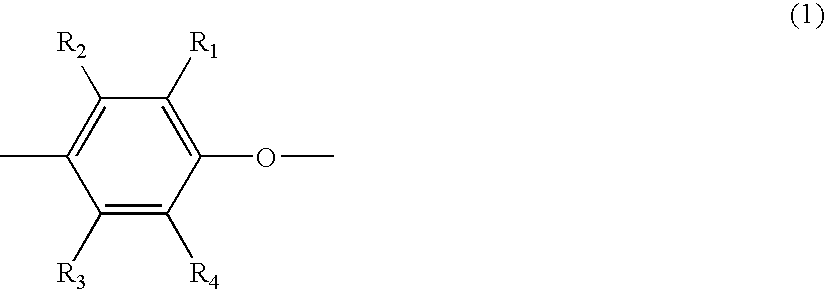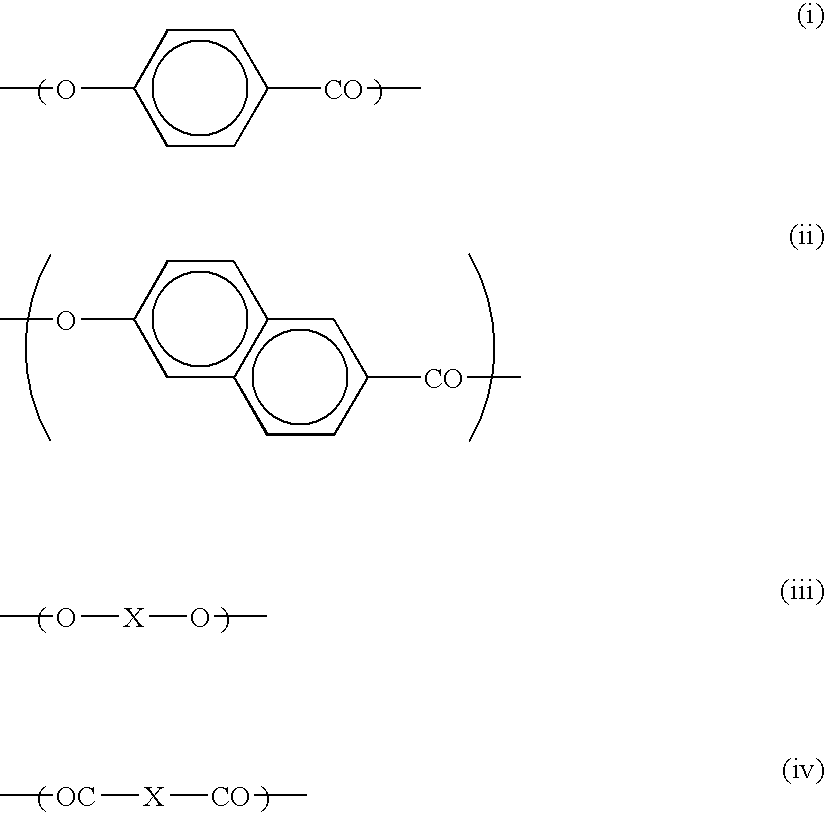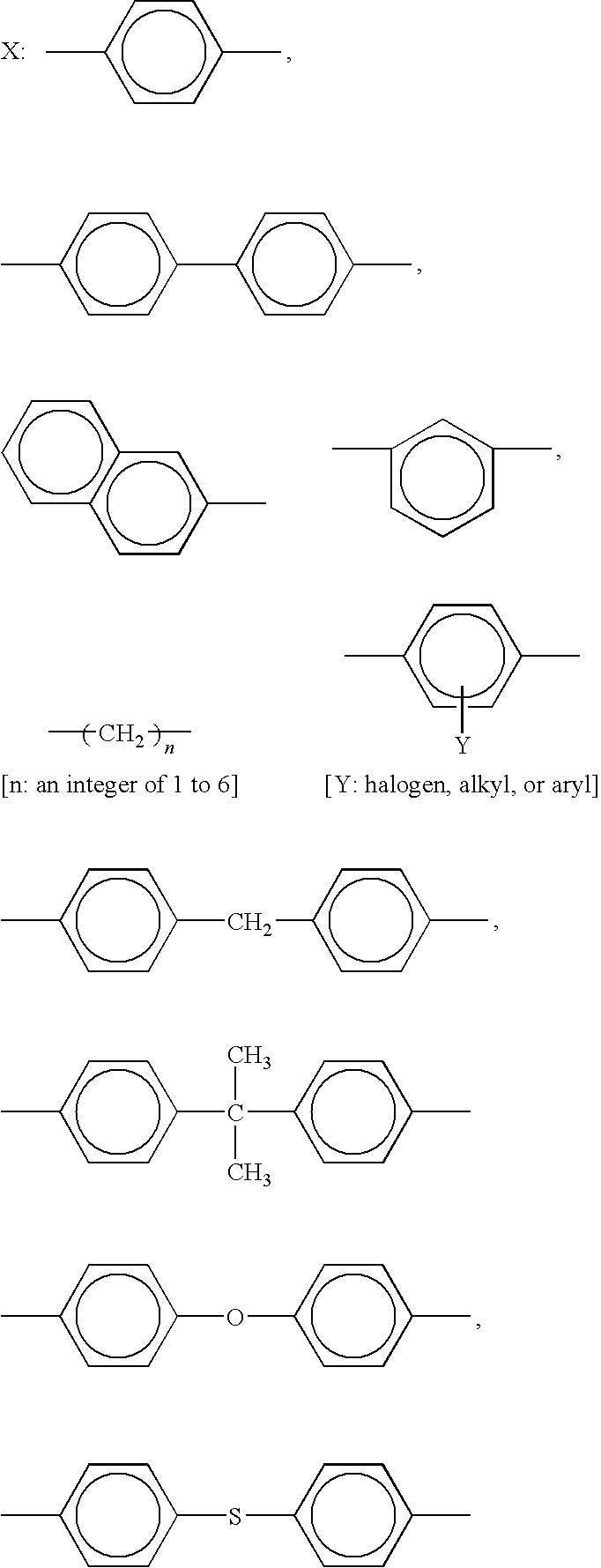Mold releasing film for printed circuit board production
a technology of printed circuit board and film, applied in the field of mold releasing film, can solve the problems of poor workability, film tends to be wrinkled, and cannot be satisfactorily processed, and achieves the effects of hardly imparting wrinkles to printed circuit board products, good mold releasing property, and little heat shrinkag
- Summary
- Abstract
- Description
- Claims
- Application Information
AI Technical Summary
Benefits of technology
Problems solved by technology
Method used
Image
Examples
production example 1
Production of Polyphenylene Ether (PPE-1)
[0088]The polyphenylene ether is poly(2,6-dimethyl-1,4-phenylene ether) in a powder form having a reduced viscosity of 0.42, obtained by oxidative polymerization of 2,6-dimethylphenol.
production example 2
Production of Liquid Crystalline polyester (LCP-1)
[0089]A liquid crystalline polyester (LCP-1) having the theoretical structural formula shown below was obtained by charging p-hydroxybenzoic acid, 2-hydroxy-6-naphthoic acid and acetic anhydride under a nitrogen atmosphere and heating and melting the whole to effect polycondenzation. The component ratio of the composition is given by molar ratio.
production example 3
Production of Liquid Crystalline Polyester (LCP-2)
[0090]A liquid crystalline polyester having the theoretical structural formula shown below was obtained by charging p-hydroxybenzoic acid, 2-hydroxy-6-naphthoic acid, hydroquinone, isophthalic acid and acetic anhydride under a nitrogen atmosphere and heating and melting the whole to effect polycondenzation. The component ratio of the composition is given by molar ratio.
[0091]The film formation and physical property evaluation of each resin composition were carried out in accordance with the following methods.
(1) Inflation Molding
[0092]Extrusion sheet molding was carried out with the obtained pellets by a tubular method using an extruder having a screw diameter of 50 mm set at a cylinder temperature of 290° C. and a cylindrical die temperature of 290° C. The pressure of blowing air was set so that the thickness became 50 μm.
[0093]In the case of a multilayer film, the film was prepared while regulating the pressure of blowing air and f...
PUM
| Property | Measurement | Unit |
|---|---|---|
| thickness | aaaaa | aaaaa |
| contact angle | aaaaa | aaaaa |
| temperature | aaaaa | aaaaa |
Abstract
Description
Claims
Application Information
 Login to View More
Login to View More - R&D
- Intellectual Property
- Life Sciences
- Materials
- Tech Scout
- Unparalleled Data Quality
- Higher Quality Content
- 60% Fewer Hallucinations
Browse by: Latest US Patents, China's latest patents, Technical Efficacy Thesaurus, Application Domain, Technology Topic, Popular Technical Reports.
© 2025 PatSnap. All rights reserved.Legal|Privacy policy|Modern Slavery Act Transparency Statement|Sitemap|About US| Contact US: help@patsnap.com



